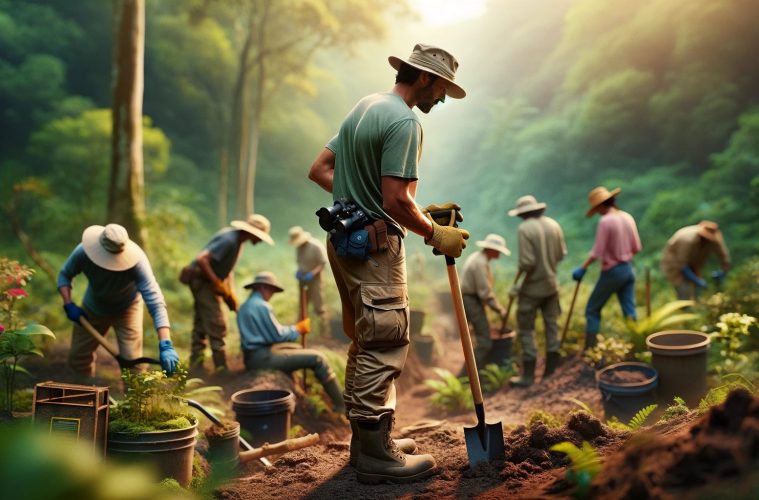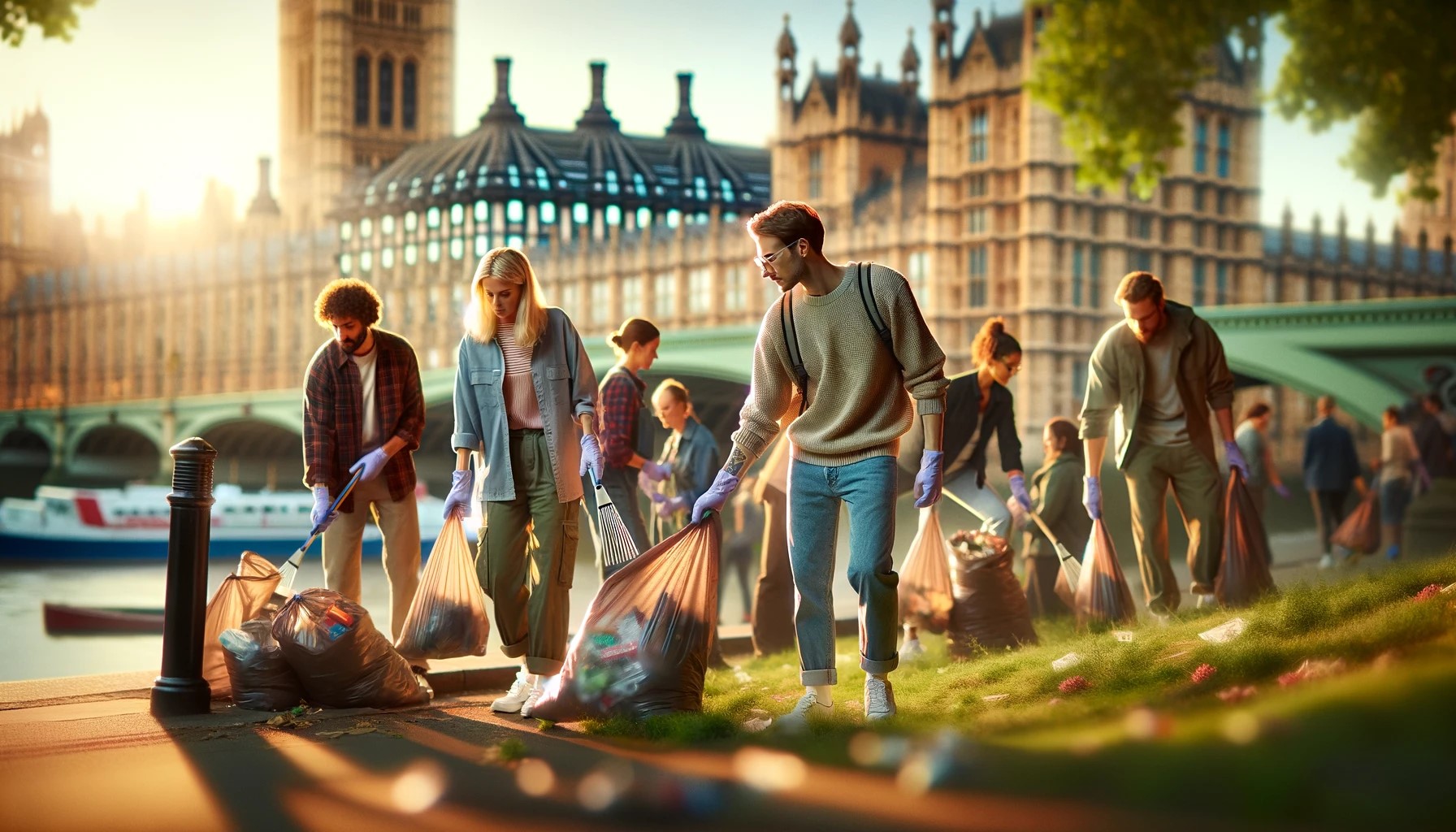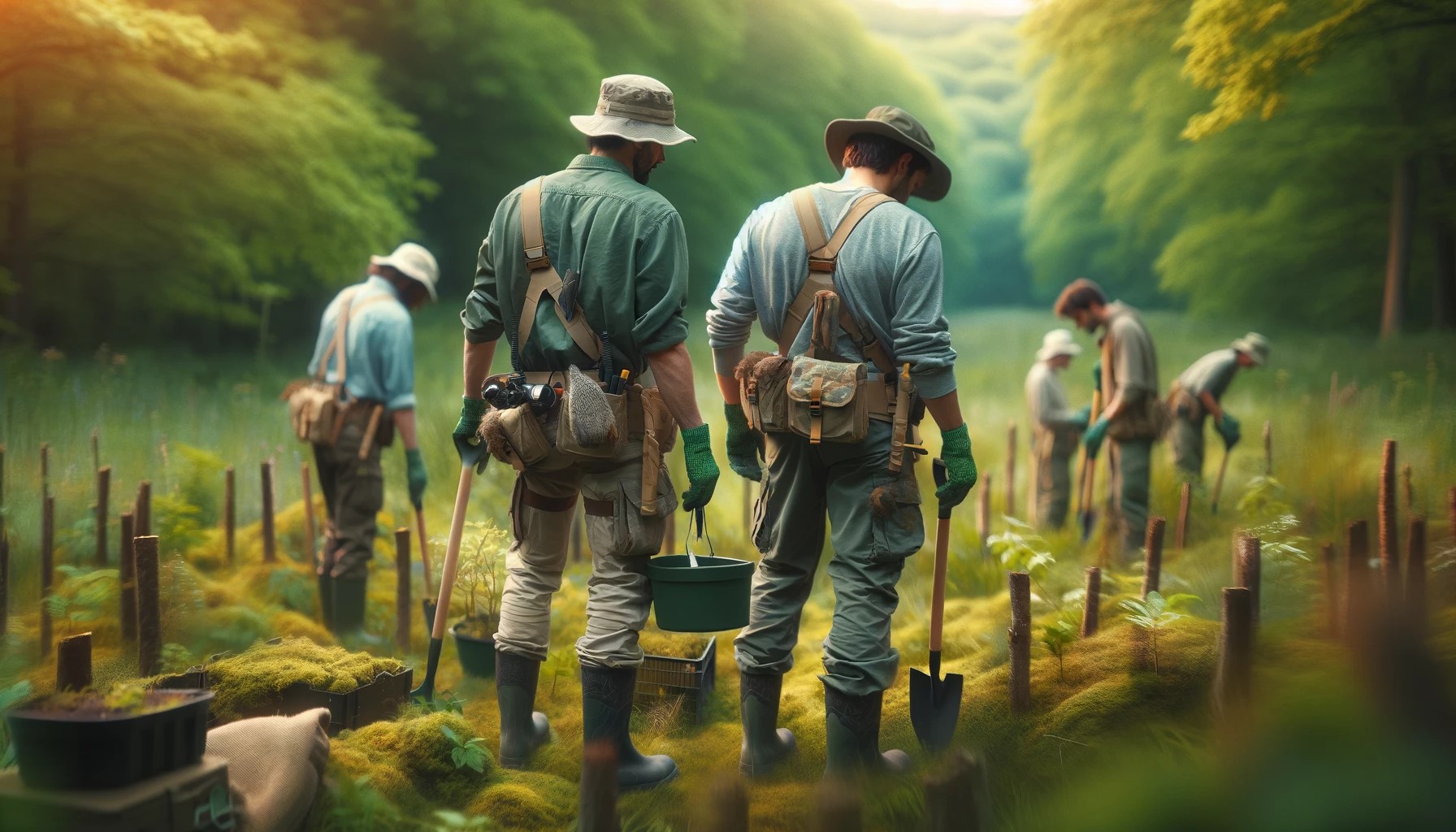Why Volunteer for Wildlife Conservation in London?
Volunteering for wildlife conservation in London offers a unique opportunity to contribute positively to the environment and gain invaluable personal experiences. Whether you’re a Londoner or a visitor, your involvement can significantly impact our local ecosystems and the broader environment.
The Benefits of Volunteering
Personal Growth and Community Connection: Engaging in conservation efforts allows you to develop new skills, understand environmental challenges firsthand, and connect with like-minded individuals dedicated to making a difference.
A Healthier Ecosystem: Your efforts in wildlife conservation help to maintain and enhance London’s biodiversity, ensuring a healthier, more resilient urban ecosystem that benefits us all.
Diverse Opportunities: From habitat restoration in parks to species monitoring and public education campaigns, London offers a range of projects catering to different interests and skills.
Whether it’s planting native species or educating others about urban wildlife, your contribution helps to safeguard London’s natural heritage for future generations. By volunteering, you become part of a collective effort to preserve and protect our city’s wildlife.
Understanding London’s Unique Biodiversity
London’s urban landscapes are teeming with a surprising variety of wildlife, creating a unique ecosystem right in the heart of the city. From the majestic peregrine falcons soaring above to the elusive hedgehogs wandering our parks at night, London’s biodiversity is both rich and diverse.
You might be surprised to learn that London is home to an array of species, including bats, foxes, and over 13,000 species of insects. These creatures have adapted to urban life in fascinating ways.
The Impact of Urban Environments
Urban environments pose significant challenges to wildlife, such as habitat fragmentation and light pollution. Yet, many species have shown remarkable resilience and adaptability by thriving in green spaces and waterways scattered throughout the city.
The biggest threats include habitat loss, pollution, and human-wildlife conflicts. Conservation efforts are crucial in mitigating these threats, ensuring the survival of London’s wildlife.
The Role of Conservation Work
Conservation work in London focuses on protecting habitats, restoring ecosystems, and educating the public about the importance of urban biodiversity. Projects like the creation of ‘green corridors’ enable species to move freely and safely across the city, enhancing the urban ecosystem’s health and resilience. Your involvement in these efforts can help ensure that London remains a thriving habitat for its unique wildlife.
Getting Started: How to Find the Right Volunteering Opportunity
Embarking on a journey to volunteer for wildlife conservation in London is a commendable step towards making a tangible difference in our urban ecosystem. Whether you’re passionate about protecting native species or enhancing green spaces, there’s a place for everyone to contribute.
Finding Volunteering Opportunities
Numerous resources are available to help you find the perfect volunteering role. Websites of local conservation groups, environmental charities, and social media platforms are excellent places to start. They list opportunities ranging from one-off events to ongoing projects.
Consider what skills you can bring to the table and what you’re passionate about learning. Whether it’s hands-on habitat restoration or data collection for species monitoring, there’s a wide range of activities to suit different interests and abilities.
Most volunteering roles will require enthusiasm and a commitment to conservation, but specific skills or qualifications might be necessary for certain tasks. Training is often provided, so don’t let a lack of experience deter you.
Opportunities for Everyone
Whether you’re a London resident or just passing through, your contribution is valuable. Short-term projects and flexible roles make it possible for everyone to get involved and support London’s wildlife conservation efforts.
The Role of Community in Wildlife Conservation
Community-driven conservation projects are the heartbeat of local environmental efforts, bringing together individuals with a shared passion for preserving London’s natural heritage. By collaborating on various initiatives, communities play a pivotal role in enhancing the urban ecosystem and safeguarding wildlife.
These projects not only improve habitats and biodiversity but also strengthen community bonds through shared goals. By working together, residents can achieve substantial positive changes that benefit both wildlife and the local environment.
Individual Contributions to Conservation
From creating wildlife-friendly gardens to participating in local clean-up events, there are numerous ways you can contribute to conservation efforts within your community. Your individual actions, no matter how small, add up to a significant impact.
Educating friends, family, and neighbours about the importance of wildlife conservation is crucial. Hosting workshops, sharing information on social media, and engaging with local schools can help raise awareness and inspire others to take action.
Success Stories from London
London boasts several successful community conservation initiatives, such as the transformation of disused urban areas into thriving green spaces that support local wildlife. These examples serve as powerful reminders of what can be achieved when communities come together for a common cause.
Climate Change and Its Effects on Urban Wildlife
The impact of climate change on London’s urban wildlife is becoming increasingly apparent, with shifts in habitat, food availability, and species behaviour. As the city experiences warmer temperatures and more extreme weather events, our local biodiversity faces significant challenges.
Species that once thrived in cooler climates are now struggling, while others are adapting by changing their migration patterns or breeding seasons. These shifts can disrupt the delicate balance of ecosystems.
Various measures are being implemented to mitigate the impact of climate change on London’s wildlife. Creating green roofs, planting more trees, and restoring natural habitats in urban areas are just a few examples. These efforts aim to provide cooler environments and safe havens for wildlife amidst urban development.
Volunteering for Climate Action
Volunteers play a crucial role in these conservation efforts. Participating in tree-planting initiatives, monitoring wildlife, or supporting local environmental campaigns can all contribute to mitigating the effects of climate change.
The long-term goal is to create resilient ecosystems that can withstand the pressures of climate change. By enhancing urban green spaces and promoting biodiversity, we can ensure a healthier future for London’s wildlife. Your involvement as a volunteer can help make this vision a reality.
Educational Programs and Workshops for Conservation Awareness
In the quest to protect London’s wildlife, education plays a pivotal role. By engaging in educational programs and workshops, individuals of all ages can gain a deeper understanding of the importance of conservation and learn how they can contribute to these efforts.
There’s a wealth of educational opportunities available, ranging from workshops held by local conservation groups to seminars and online courses focused on urban ecology and wildlife protection. These programs are designed to suit a variety of interests and learning styles.
The Impact of Workshops and Seminars
Through interactive workshops and seminars, participants can gain hands-on experience and knowledge about the challenges facing urban wildlife. These sessions often include practical activities, such as building bird feeders or creating wildlife-friendly spaces, which contribute directly to conservation efforts.
Programs for Children and Schools
Specialised programs aimed at children and schools offer a fun and engaging way to introduce young minds to the importance of biodiversity and conservation. These initiatives not only educate but also inspire students to become active participants in preserving their local environment.
Enhancing Community Engagement
Educational efforts can significantly boost community engagement and support for conservation projects. By understanding the critical role that wildlife plays in our urban ecosystem, communities are more likely to come together to support conservation initiatives, making a lasting impact on the health and sustainability of local wildlife populations.
Technology and Innovation in Wildlife Conservation
The integration of technology and innovation into wildlife conservation in London is transforming the way we protect and study urban biodiversity. From tracking animal movements to monitoring ecosystems, technological advancements are enhancing our efforts to safeguard the city’s natural habitats.
Technologies such as GPS tracking, drone surveillance, and data analytics are being used to gather critical information about wildlife populations and their habitats. This data helps in making informed decisions and implementing targeted conservation strategies.
Innovative approaches, like the use of bioacoustics to monitor species or mobile apps for citizen science projects, are engaging the community in conservation efforts. These tools allow for real-time data collection and a deeper understanding of wildlife needs.
Volunteering in Tech-Driven Projects
Volunteers have the opportunity to contribute to tech-driven conservation projects, whether by participating in data collection, helping with technology maintenance, or engaging in community science initiatives. Your involvement can significantly impact the success of these projects.
The Impact of Technological Advancements
Technological advancements have made conservation efforts more efficient and effective, enabling precise monitoring and faster response to environmental changes. These tools empower conservationists and volunteers to do more with less, ensuring that London’s wildlife thrives for generations to come.
The Challenges of Urban Wildlife Conservation
Urban wildlife conservation in London faces a unique set of challenges stemming from the city’s dense human population and the continuous expansion of urban development. These issues require innovative solutions and the collective effort of the community to ensure the protection and preservation of local wildlife.
Addressing Habitat Fragmentation and Pollution
Habitat fragmentation and pollution are two of the most significant threats to urban wildlife. Conservationists are actively working to create green corridors and implement pollution reduction initiatives to mitigate these issues. By enhancing connectivity between green spaces, animals can safely move across the city, and pollution control measures help maintain cleaner habitats.
Effective strategies to balance urban development with wildlife protection include incorporating biodiversity considerations into city planning and development projects. This approach ensures that urban expansion considers the needs of local wildlife, promoting coexistence.
Volunteer Contributions to Overcoming Challenges
Volunteers can play a crucial role in overcoming these challenges by participating in habitat restoration projects, pollution clean-up efforts, and community education programs. Your involvement not only contributes to the immediate improvement of local ecosystems but also fosters a culture of environmental stewardship within the community.
Success Stories: Transformative Conservation Efforts in London
London’s commitment to wildlife conservation has led to numerous success stories that highlight the impact of collective efforts and the importance of volunteer participation. These projects not only enhance local biodiversity but also bolster community awareness and engagement in environmental stewardship.
Celebrating Conservation Achievements
One notable success is the Thames River restoration project, which has significantly improved water quality and led to the return of species like the European eel and various waterfowl. Another example is the rewilding of urban spaces, where disused areas have been transformed into thriving habitats for bees, butterflies, and birds.
These projects have not only revitalised ecosystems but also raised community awareness about the importance of environmental conservation. They serve as living classrooms and green oases that enrich urban life.
Lessons Learned
The success of these initiatives teaches us the value of persistence, the importance of community involvement, and the potential of innovative approaches to conservation. They demonstrate that even small changes can have a profound impact on local biodiversity.
The achievements of these projects inspire future conservation efforts and underscore the vital role of volunteers. Whether it’s through hands-on participation or spreading awareness, everyone has the power to contribute to the preservation and enhancement of London’s natural heritage.
Conclusion: The Future of Wildlife Conservation in London
As we look towards the future, the role of volunteers in wildlife conservation becomes increasingly pivotal. The challenges faced by urban wildlife are growing, compounded by climate change, habitat loss, and urban expansion. Yet, with every challenge comes an opportunity for us to make a difference.
Volunteering for wildlife conservation is more crucial now than ever. It represents a direct action towards safeguarding our natural heritage and ensures that future generations will inherit a greener, more biodiverse London.
Supporting wildlife conservation extends beyond volunteering. It includes advocating for green policies, making wildlife-friendly choices in our daily lives, and continuing to educate ourselves and others about the importance of conservation.
Envisioning the Future
The vision for the future of wildlife conservation in London is one where urban development and natural habitats coexist harmoniously. It’s a future where biodiversity thrives amidst the cityscape, supported by a community committed to environmental stewardship.
Join the Movement! If you’re inspired to contribute to this vision, the next step is clear. Explore volunteering opportunities, engage with local conservation groups, and become an advocate for wildlife in your community. Together, we can make a significant impact on the future of wildlife conservation in London.




